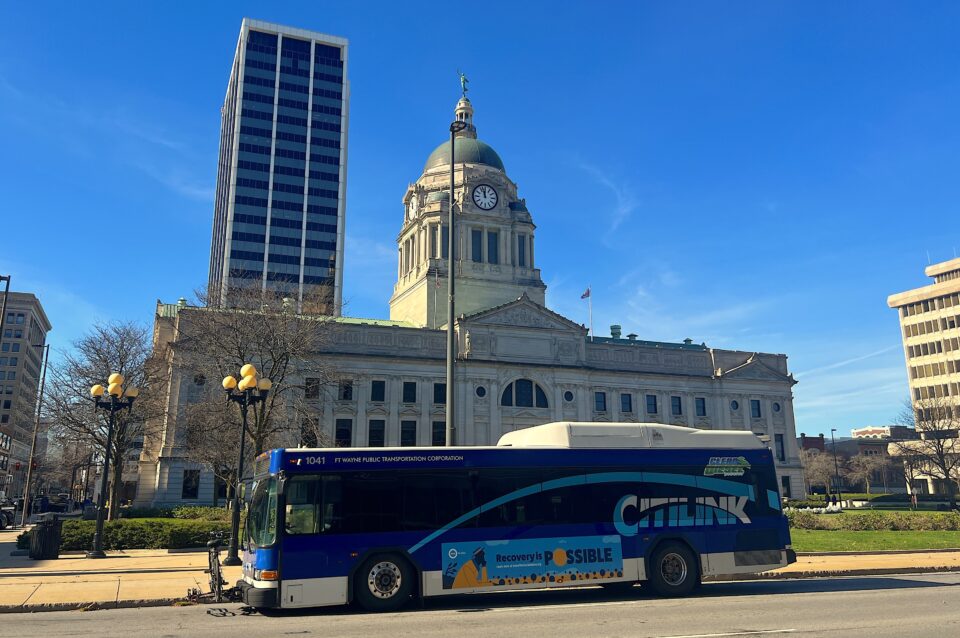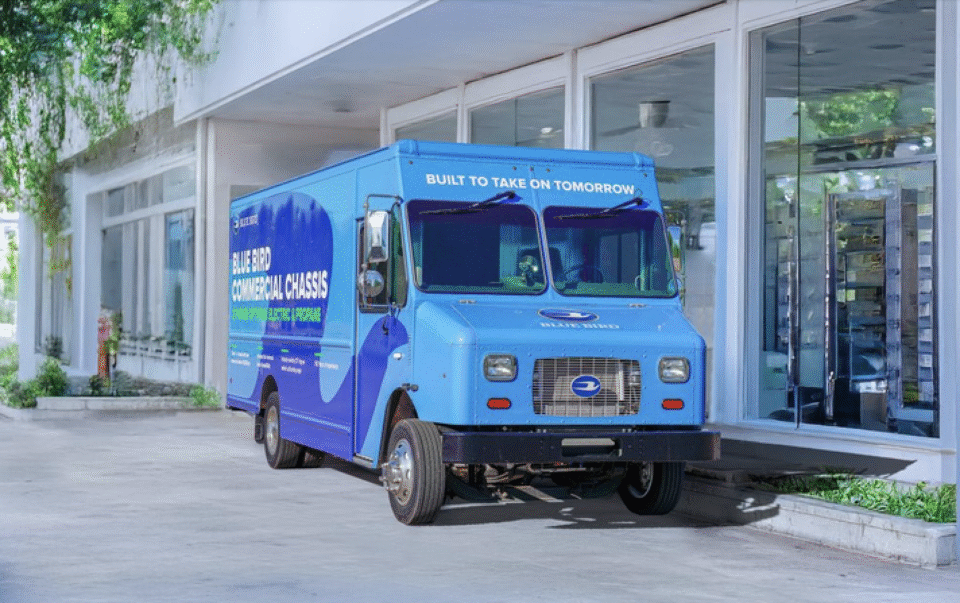In Pursuit of Savings: How an Indiana Town is shifting to electric cars to save money
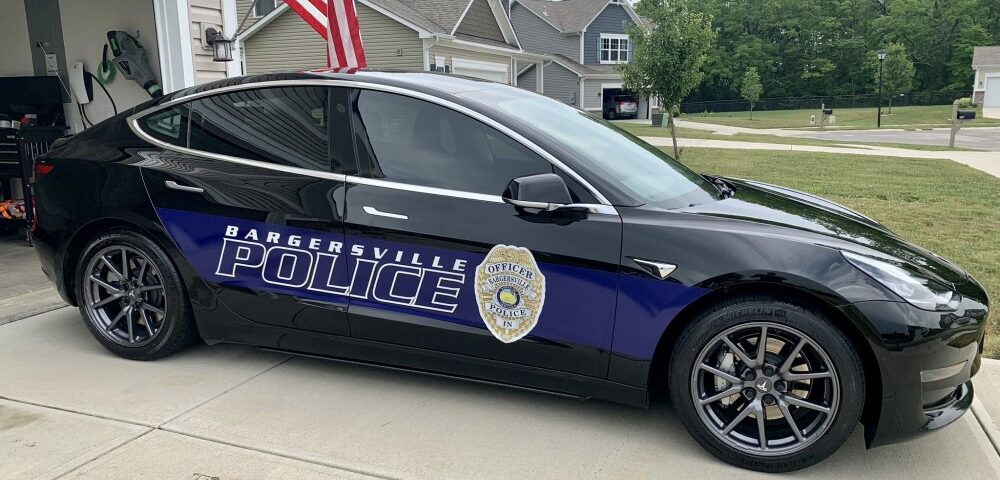
Written by Kaylee May, Greater Indiana Events and Communications Coordinator and George Clark, Grants and Special Projects Coordinator
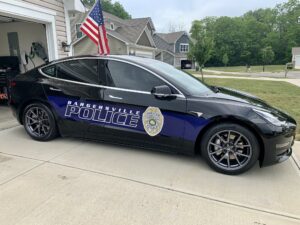 In August 2019, the Bargersville Police Department introduced its first all-electric patrol vehicle, making it one of the first departments in the United States to implement the Tesla Model 3 as a squad car. Since then, three more Tesla Model 3 vehicles have been added to the department’s fleet.
In August 2019, the Bargersville Police Department introduced its first all-electric patrol vehicle, making it one of the first departments in the United States to implement the Tesla Model 3 as a squad car. Since then, three more Tesla Model 3 vehicles have been added to the department’s fleet.
For many years it was believed electric vehicles could not provide the speed, handling, and power needed in pursuit vehicles. Police Chief Todd Bertram of the Bargersville Police Department says, “that is not the case.”
Following Bargersville’s lead, the Westport Police Department in Connecticut and the Windham County Sherriff’s Office in Virginia have purchased their first Tesla vehicles.
Chief Todd Bertram and the Bargersville Police Department found the Tesla Model 3 vehicles are saving the department each month. August of 2020 marked the one-year birthday of the first Tesla Model 3 purchased by the department. Bertram reported over the course of its first year, the Tesla Model 3 saved the department $6,320 in fuel and maintenance costs. As shown in the table below, the department’s cost for the Tesla Model 3 was $825 compared to $7,580 for the Dodge Charger.

Figure 1. The Bargersville Police Department’s costs and savings during the first year with a Tesla Model 3 patrol car.
The Tesla Model 3 vehicle purchase price is $14,500 more than the gasoline-fueled Dodge Charger patrol vehicles the department typically purchases. With the fuel and maintenance savings the department has seen over the course of the first year, the department expects to recoup its investment in just 19 months.
Over the course of the six year span the department typically has a vehicle, each Tesla will save the department approximately $38,000. After recovering the $14,500 from the increased purchase price, the department will net approximately $23,500 for each Tesla in the fleet. With the four Tesla Model 3’s currently in the department, the Bargersville Police Department is on track to save approximately $152,000 over the next six years.
The department currently has 14 patrol cars. With an all-electric police fleet, Chief Bertram hopes Bargersville will one day achieve a goal of saving more than $88,500 each year. The additional savings will go a long way for the Bargersville Police Department. Like many police departments, Bargersville has a finite budget. With the introduction of the all-electric patrol cars, the department could repurpose the dollars saved on fleet fueling and maintenance to fund other budget items without needing to increase the overall budget.
Environmental Benefits
In addition to the cost savings experienced with the addition of an electric vehicle, fleets also benefit from reduced emissions resulting in cleaner air. According to the Office of Energy Efficiency and Renewable Energy, direct emissions from conventional vehicles are emitted through the tailpipe, evaporation from the fuel system, and during the fueling process. The direct emissions include smog-forming pollutants such as nitrogen oxides and greenhouse gases (GHGs), primarily carbon dioxide. In contrast, all-electric vehicles produce zero direct emissions, drastically reducing a driver’s environmental impact.[1]
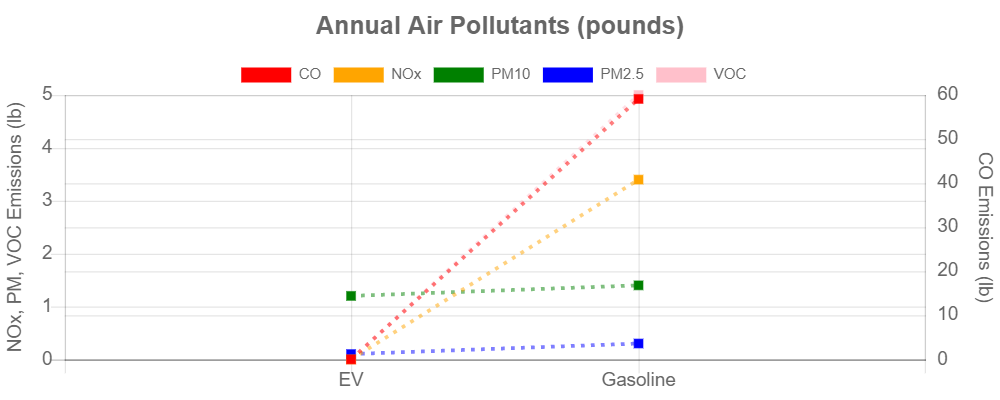
Figure 2. Based on AFLEET calculations for Bargersville Police Department
As shown by Figure 2, each electric vehicle introduced to the Bargersville Police Department fleet reduced the Carbon Monoxide (CO) and Nitrogen Oxide (NOx) emissions by 100 percent compared to the conventional vehicle being replaced. Overall, the addition of four electric vehicles reduced the fleet’s NOx emissions by 28.5 percent and CO emissions by 28.5 percent.
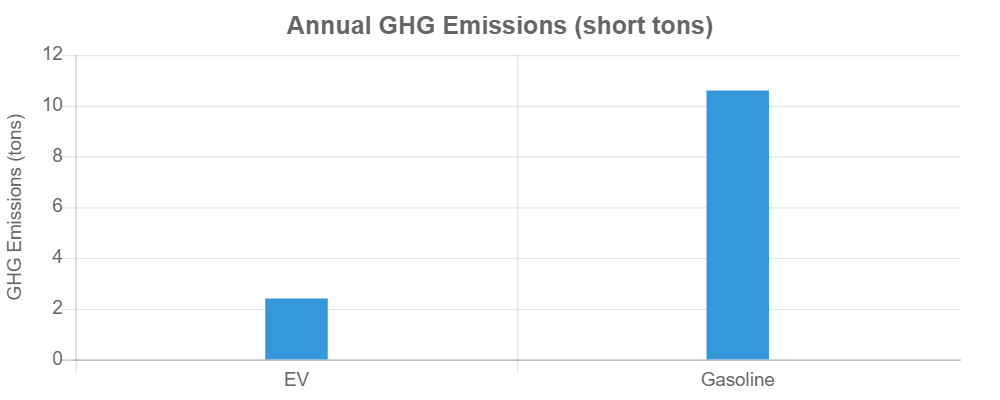
Figure 3. Based on AFLEET Calculations for Bargersville Police Department
Figure 3 shows each conventional vehicle replaced by an electric vehicle reduces greenhouse gas emissions by 77 percent. With the addition of four electric vehicles, the Bargersville Police Department fleet has reduced total greenhouse gas emissions by 22 percent.
Cost Savings During COVID-19
Despite COVID-19, Chief Bertram reported the department saw an “increase in trips taken.” He went on to say, “the electric vehicles saw increased mileage and savings” during the months of March and April 2020, when the pandemic prompted a sharp decrease in travel throughout Indiana.
Overall, the department budgeted $49,000 for fuel in 2020 and by June, 75 percent of the department’s fuel budget was still available.
From August to December 2019, the department saved $2,205 with the introduction of one electric vehicle. In May 2020, the department saved $980 with three electric vehicles. Chief Bertram based his estimate on the average gas price of $1.98. He also included the cost of an oil change the cars would have received if they had been gasoline-fueled.
Similarly, in June 2020, the department saved $933, based on an average gasoline price of $2.15. All estimates are based on nineteen miles-per-gallon the department’s gasoline-fueled patrol cars run on.
The department installed one electric vehicle charger to the side of the Police Department Building and another on town property. In total, the department spent $1,000 to install the EV chargers. Moving forward, the department hopes to expand the charging infrastructure available to six level 2 chargers and one DC Fast Charger.
Since August 2019, the department has experienced minimal maintenance related expenses for its electric vehicles. “The only time the cars have been up on a lift was to have the tires replaced,” Chief Bertram explained. The vehicles have minimal maintenance requirements, keeping the vehicles on the road and out of the shop.
The vehicle driven by Chief Bertram traveled 1200 miles in May of 2020 and used $44.00 in electricity, the equivalent of $262.00 in gasoline. “The department is seeing the savings each month,” said Chief Bertram.
Maintenance Schedule Analysis
A significant portion of the cost savings associated with Electric Vehicles comes from the reduction in fuel costs, however, when considering the nature of working vehicles, the maintenance cost savings are often significant over the vehicle’s operational lifetime. Analyzing the maintenance schedule of EV’s reveal not only a reduction in the cost of maintenance, but a reduction in the frequency of service. This includes time spent off the road, adding to the opportunity costs of operating their gas-powered equivalents. Below is a list of the maintenance requirements and schedule from the manufacturer[2].
Yearly Maintenance:
Brakes – Brake pads do not require replacement due to regenerative braking, however Tesla recommends cleaning and lubricating all brake calipers every 12 months or 12,500 mi for cars in cold weather regions.
Tires – Rotation, Balance and Wheel Alignments. Tesla recommends rotating your tires every 6,250 miles or if tread depth difference is 2/32 in or greater, whichever comes first. Unbalanced and misaligned wheels affect handling, tire life, and steering components.
Scheduled Maintenance:
Cabin Air Filter – Tesla’s are equipped with an air filter that prevents pollen, industrial fallout, road dust and other particles from entering through the vents. Tesla recommends replacing your cabin air filter every 2 years. If your Tesla is equipped with a HEPA filter, Tesla recommends replacing it every 3 years.
Brake Fluid Test – Tesla recommends testing brake fluid lines for contamination every 2 years and replacing as needed.
Air Conditioning Service – An air conditioning service replaces the desiccant to help the longevity and efficiency of the air conditioning system. Tesla recommends an air conditioning service every 2 years for Model S, every 4 years for Model X and Model Y and every 6 years for Model 3.
EV Patrol Car: Myth vs Fact
Pursuit: When considering vehicles for law enforcement, pursuit and high-speed chase is often the first challenge posed by officers and police councils. When asked about the EV’s pursuit rating, chief Bertram gave a brief background of these ratings saying “the performance is what you rate it on.” He continues to highlight a few of the specifications that set it apart from its traditional incumbent, saying “you don’t have all of the junk that happens in a gas car.” He recalls a pursuit early on while in the Model 3 and highlighted a few facts from the chase. “It was not a high-speed pursuit, most of them are not.” The idea that every pursuit result in a high-speed chase doesn’t reflect in his experience saying, “they’re trying to get away from you, they’re not trying to race you.” During these types of pursuits, the EV’s instant acceleration and low volume makes it more agile in urban and suburban areas.
Range: When considering the area of operation for officers, range is often highlighted as the second biggest concern. Rural police departments often have larger jurisdictions, leading some to believe the range of an EV may cause limitations. To address the topic of range, Chief Bertram replies “when you start your shift out on an empty tank, the same thing will happen in a gas car.” He went on to say that even with the heat or air-conditioning, lights, and computer running the car could “run for days.” When asked how the department has addressed their charging situation, Chief Bertram gave some insight stating, “We’ve since put another charger on town property, resulting in more charging options.” With plans for a new building, the department is also factoring in more Level 2 chargers and a DC fast charging station.
Equipment: Some manufacturers offer pre-outfitted patrol vehicles that come fully equipped with traditional equipment like lighting and auxiliary power. However, in most cases, police departments purchase their vehicles without the added equipment, opting to install after the purchase. Chief Bertram remarks the benchmark Dodge Charger is no different: “When you get a $25,000 Dodge Charger, you get an engine with wheels and some seats; it doesn’t come with anything, it is stripped down.” When we compare standard hardware to a modern EV, the details make all the difference. When asked if the Tesla Model 3 had the features he needed, Chief Bertram replies: “of course the Tesla has all of that, and it gets better over time.” This is in reference to the Tesla’s ability to improve through software updates over the air (wireless capability).
Surveillance: Over the last year, surveillance has been a priority for police departments across the country. The Tesla Model 3 is equipped with eight surround cameras that provide 360 degrees of visibility around the car at up to 250 meters of range.[3] Not only do the built-in cameras aid in accident prevention, they have aided Chief Bertram in picking up useful footage in the field even before he has begun recording, proving invaluable to the department.
Overall, Todd Bertram has found their new electric patrol cars have “outperformed the other patrol cars” they use.
Advice for Fellow Departments
When asked if there were any lessons learned during his experience, Todd Bertram gave some advice to departments looking to make the switch. “I’ve talked to hundreds of police departments from all over the country, people have called wanting to know how it’s going, what we did, and how we did it.”
“I’ve become a spokesperson for police Tesla adoption. Because of the savings we’ve experienced and the fact the cars have multiple capabilities, we continue to add them to our fleet.” Bertram continued, “Eventually, we would like to have an all-electric vehicle fleet.”
He expressed departments should “do their homework” when considering an electric patrol car to find out more about the vehicles, their capabilities, and the availability of charging stations in the area. Bertram said he couldn’t see how the electric cars wouldn’t work for an agency or municipality, encouraging departments interested to take a look at the available options and test drive an electric car to see for themselves.
[1] http://energy.gov/eere/electricvehicles/reducing-pollution-electric-vehicles


